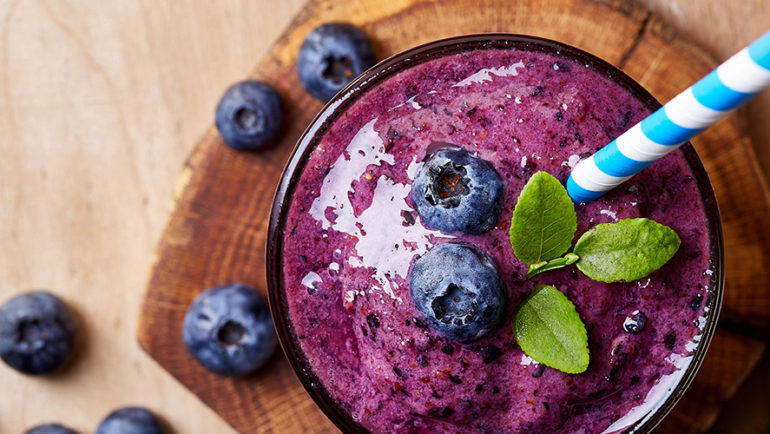Purple mood foods: The velvety shades of purple you find in berries, eggplant and red cabbage are almost magical in their appeal. These vivid colors are caused by anthocyanins occurring naturally in the plants – from the Greek: anthos “flower” and kyanous “dark blue”. Anthocyanins even boost our health and protect our body’s cells. Here we explain where to find them and how to pile them on your plate. And we’ll also tell you why red cabbage and purple cabbage are one and the same.
Anthocyanins occur in all purple plants
You may not have heard of anthocyanins, but you will certainly have seen them. Any dark red, violet or purple flowers, fruits or vegetables contain significant quantities of these natural pigments. They are also found in red leaves in the fall and in the reddish leaves of many young plants. The chemical-sounding term anthocyanin derives from the Greek words anthos meaning “flower” and kyanous meaning “dark blue”.
A high concentration of anthocyanin lies behind the widely held view that red wine has health-boosting properties. But a much healthier source of purple power is to be found in fruits and vegetables.
Purple mood fruits: Blackberries, blueberries, black currants, elderberries, chokeberries, acai berries, cherries, black grapes, plums, figs, dark red apples
Purple mood vegetables: Red cabbage, eggplant, beetroot, radicchio, purple tomatoes, purple carrots, purple-fleshed potatoes, red onions, purple peppers, kidney beans and other purple pulses
Purple cell protection
Plant pigments not only look attractive, they also serve an important purpose – both for plants and for humans. Anthocyanins are predominantly found in the outer layers of plants to protect them from excessive sunlight. As strong antioxidants, they bind aggressive free radicals and render them harmless. In the same way, they also protect our body’s cells. Some studies suggest that anthocyanins even reduce the risk of cardiovascular disease and cancer. However, no definitive evidence for this has yet been put forward.
Red cabbage or purple cabbage?
Red cabbage and purple cabbage are exactly the same thing. But what color is the cabbage really, red or purple? This color conundrum is caused by properties peculiar to anthocyanins: In an acidic environment they are red, but in alkaline surroundings they turn blue-purple. So if you prefer your purple cabbage red, simply add a little vinegar or lemon juice. Anthocyanins are also responsible for the fact that hydrangeas may produce pink or blue blooms. You can manipulate their color by changing the pH value of the soil, making it either more acidic or more alkaline.
Quantity is key – but keep it natural
They look great, taste great and are great for your health – so pile on the anthocyanins! We recommend adding the fruits and vegetables listed above to your plate as often as possible. They will do more for you than any pills or powders, because in addition to anthocyanins these natural foodstuffs contain other healthy plant substances, such as carotenoids.
One minor downside: The human body absorbs relatively little of the anthocyanins found in food. So in order to get as much as you can, you should treat yourself to some purple mood food as often as possible. Anthocyanins are mainly found in the peripheral layers. So don’t peel too much off – eat as much as you can of the dark outer layers and all the purple parts of the plant. It’s best to store your prized purple possessions in a cool, dark place – but not for too long. They provide you with most anthocyanins when eaten fresh. Since the purple pigments are soluble in water, they often leach out during cooking. So either simmer the food gently in just a little water or use the purple stock for soups or sauces.
Purple mood food made easy: This purple smoothie guarantees bags of anthocyanins and can be prepared in no time at all.
 Blueberry and ginger smoothie (one portion)
Blueberry and ginger smoothie (one portion)
50g chopped strawberries or blueberries (fresh or frozen)
25g fresh blueberries
5 ice cubes
200ml orange juice
1/2 teaspoon ground cinnamon
1/2 teaspoon fresh ginger root, peeled and chopped
A little icing sugar
Preparation: Put all ingredients in a food processor, put on the lid and blend for 20-30 seconds until smooth. Sweeten with icing sugar as required.
Note: Since everyone’s health history and nutritional needs are so different, please make sure that you talk with your doctor and a registered dietitian to get advice about the diet and exercise plan that‘s right for you.

